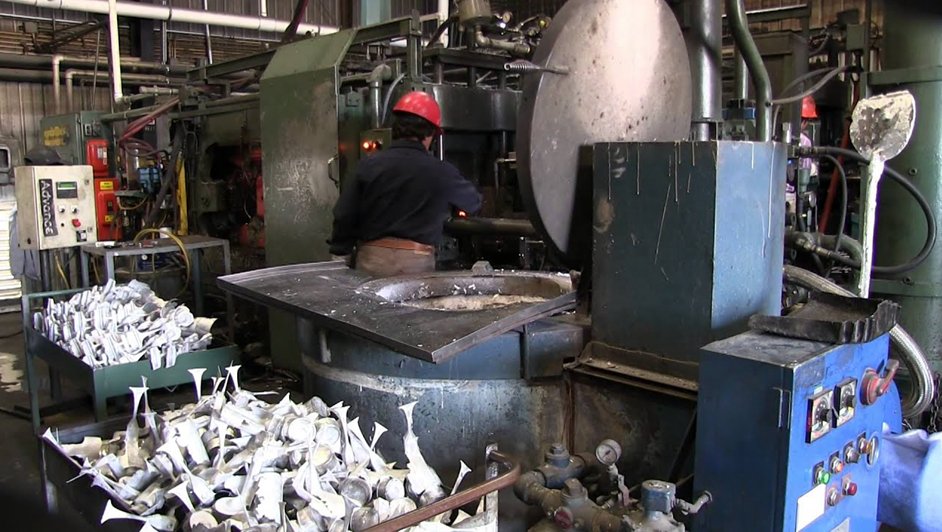Die casting is a highly versatile and widely used process in the manufacturing industry. It involves the production of intricate and complex metal parts through the use of metal molds called dies. This article aims to provide an introduction to die casting, including its history, the die casting process, and its applications across various industries.
History of Die Casting:
Die casting has a long history that dates back to the early 19th century. The first documented use of die casting dates back to 1838 when a patent was granted to two inventors, Sturges and Chubb, in the United States. However, it was not until the 20th century that die casting gained widespread popularity and became a crucial process in manufacturing.
The Die Casting Process:
The die casting process involves the use of molten metal, typically non-ferrous alloys such as aluminum, zinc, or magnesium, that is injected into a mold cavity under high pressure. The mold cavity is created using a two-part steel mold, known as a die. The molten metal is forced into the mold cavity, where it solidifies and takes the shape of the mold. Once the metal has cooled and solidified, the die is opened, and the finished part, known as a casting, is ejected.
There are two main types of die casting processes: hot chamber and cold chamber die casting. In hot chamber die casting, the molten metal is stored in a furnace, and a gooseneck mechanism injects the metal into the die. This process is primarily used for metals with low melting points, such as zinc. In contrast, cold chamber die casting involves manually ladling the molten metal into the injection system. This process is preferred for alloys with higher melting points, such as aluminum and magnesium.
Advantages of Die Casting:
Die casting offers several advantages that make it a popular choice for manufacturing intricate and complex parts. Firstly, die casting allows for the production of parts with excellent dimensional accuracy and high detail resolution. The molds used in die casting are capable of creating intricate designs and complex geometries with minimal post-processing required. Additionally, die casting offers excellent surface finish and can produce parts with a smooth and polished appearance.
Another significant advantage of die casting is its high production efficiency. The process can achieve high production rates, making it suitable for large-scale production. Die casting also allows for the production of parts with consistent quality, as the molds ensure precise replication of the desired shape and dimensions. This consistency is particularly crucial for industries where precision and reliability are paramount.

Applications of Die Casting:
Die casting finds applications in a wide range of industries, including automotive, aerospace, electronics, and consumer goods. In the automotive industry, die casting is used to produce various components such as engine blocks, transmission cases, and wheels. The aerospace industry utilizes die casting for manufacturing critical components like turbine blades and engine casings that require high strength and precision.
Die casting is also prevalent in the electronics industry, where it is used to produce housings and heat sinks for electronic devices. The ability of die casting to produce parts with excellent heat dissipation properties makes it ideal for this application. Additionally, die casting is used in the production of consumer goods such as kitchen appliances, power tools, and decorative hardware.
Conclusion:
Die casting is a crucial process in manufacturing that allows for the production of intricate and complex metal parts. Its historical significance, versatility, and numerous advantages have made it a popular choice across various industries. The ability to produce parts with high dimensional accuracy, excellent surface finish, and consistent quality makes die casting an essential process in modern manufacturing.
-

- Poklopac kućišta prijenosnog računala A
-

- Dijelovi UAV-a za livenje pod pritiskom od legure magnezija
-

- Dječji bicikl od legure magnezija od 3-8 godina Jeftini vruća prodaja 14 inča dječji bicikl ZAUVIJEK na veliko 2022.
-

- Customized die-casting parts&components
-

- Magnesium alloy die-casting Auto parts Side step Running board
-

- Dijelovi za oblikovanje kućišta mašine za usisavanje kiseonika od legure magnezijuma

 0086-750-5616188
0086-750-5616188 +86 13392089688
+86 13392089688 sales@zhongmei-tech.com
sales@zhongmei-tech.com







